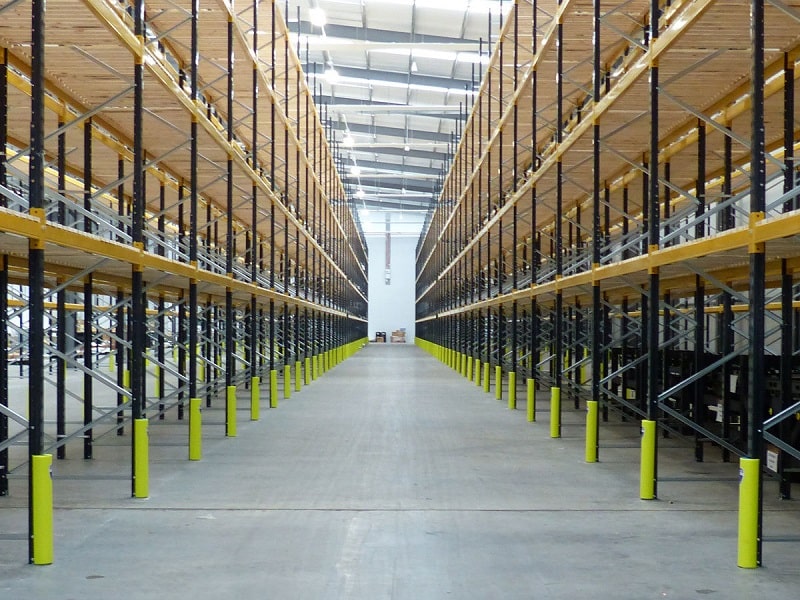Steel vs Concrete in Warehouse Construction: What Should You Choose?
May 14, 2025

Did you know that building a warehouse strong enough may last up to 20 years? But you would also have to consider your financial position to use the most suitable construction material for a warehouse. You need to consider the chosen product's durability and environmental value.
Are you confused about choosing a suitable material for your warehouse construction? Worry not—we are here to discuss the best option for you, steel or concrete. To simplify your choice, we will present a comparative discussion of the two materials.
Join us in this journey where we find the most suitable warehouse construction material to suit your needs.
Understanding the Basics
Before deepening the discussion, let’s explore the two types of warehouse construction materials.
-
Steel Warehouses:
Expert contractors use steel beams and other necessary parts to build a steel warehouse. Workers prefer shaping the structure before installing it on the ground. Using prefabricated structures helps reduce the total time taken to build the structure.
At the final stage, steel sheets are attached to give it a complete look of a warehouse.
-
Concrete Warehouses:
Unlike steel warehouses, concrete materials are used to construct such a warehouse. The entire warehouse is made of concrete mix. Concrete beams and columns form the foundation and structure of the building. The only challenging thing in concrete construction is the longer time it takes to construct it. However, the modern tilt-up construction technique can be useful to you.
Here, concrete parts are cast and cured on the ground. After they harden, they are placed accordingly to make a concrete structure. If you use precast concrete slabs, you can build an entire building within a few days. This approach saves time and on-site concrete waste.
Speed of Construction
Using a traditional construction method, a steel warehouse could take less time than a concrete one. Install the prefabricated steel columns and beams to form the structure and complete the warehouse construction process.
On the contrary, concrete warehouses take more time than the time taken to construct a steel warehouse. However, using precast concrete slabs might reduce the total time taken for construction. Still, you'd have to give some time for curing the prefabricated concrete slabs.
Cost Comparison
If you don't have sufficient money to invest in the construction of a warehouse, a steel warehouse might be a reasonable choice. Steel does not need extensive investment initially, while concrete warehouses require a significant upfront investment.
That said, if you compare the overall installation cost to the total life cycle, concrete warehouses might yield more value. Concrete is naturally more durable than steel beams and bars, and you will see the concrete structure standing tall under adverse climate conditions as well.
Durability and Maintenance
In this section, the concrete warehouse wins the race because, after construction, you do not need to spend much on its maintenance. Moreover, concrete structures are more durable than steel frames.
Corrosion-resistant paints will be needed to properly maintain a steel warehouse. Otherwise, corrosion will eat the structural integrity. Besides, the UK environment is also concrete-friendly. Otherwise, rain and cold weather will not be suitable for steel structures in the UK. A concrete structure does not need regular maintenance, but it comes with fire-resistant properties.
Sustainability and Environmental Impact
Steel warehouses offer excellent value, and old steel can be reused even after demolition. Steel beams and columns can also be recycled, although this may be difficult (not impossible).
Cement factories produce CO2 in huge quantities. The same cement is used in concrete construction, making the entire process of concrete warehouse construction have a higher carbon impact. To solve the issue, people are now using low-carbon construction materials. All you need is an expert contractor to make it happen in reality.
Which One Should You Choose?
It depends on your goal and financial capabilities. If you plan to store flammable goods in the warehouse, you should go for concrete materials. Besides, if you store clothes or food, the concrete warehouse is still a good option. However, go with steel warehouses if you plan to store construction materials, agricultural products, and more.
Our verdict
We suggest you go with a concrete warehouse, even if you need to invest more than in constructing a steel warehouse. Concrete warehouses are durable and offer excellent protection against the UK weather. You can store any goods in the concrete warehouse, which provides user flexibility. Moreover, with sustainable building design, you can save on energy usage and help the UK achieve the net-zero target by 2050.
Conclusion
Businesses use warehouses to store their business goods safely. A concrete warehouse is durable and resistant to rain or fire. On the contrary, a steel warehouse might need less investment, but you must maintain it continuously. Moreover, in case of fire, it may not protect valuable goods as a concrete warehouse does.